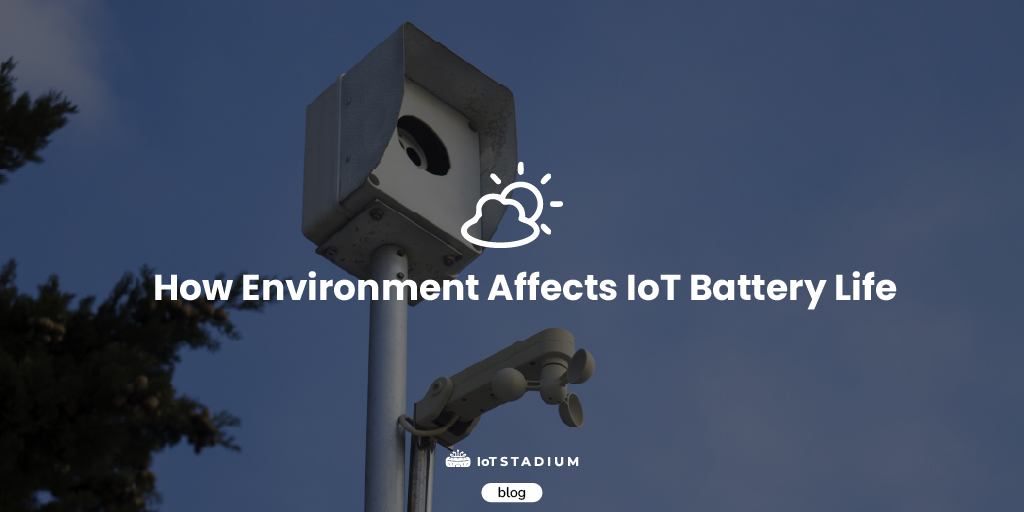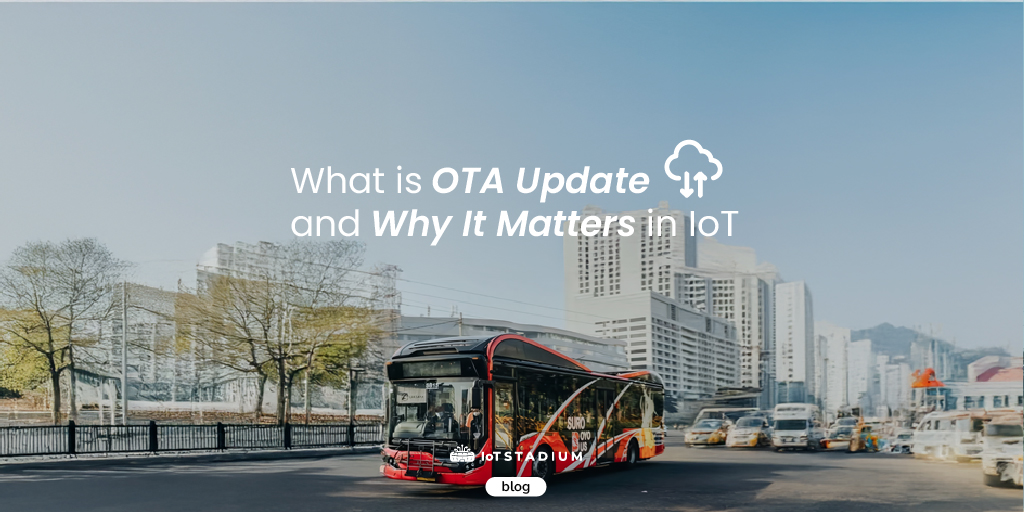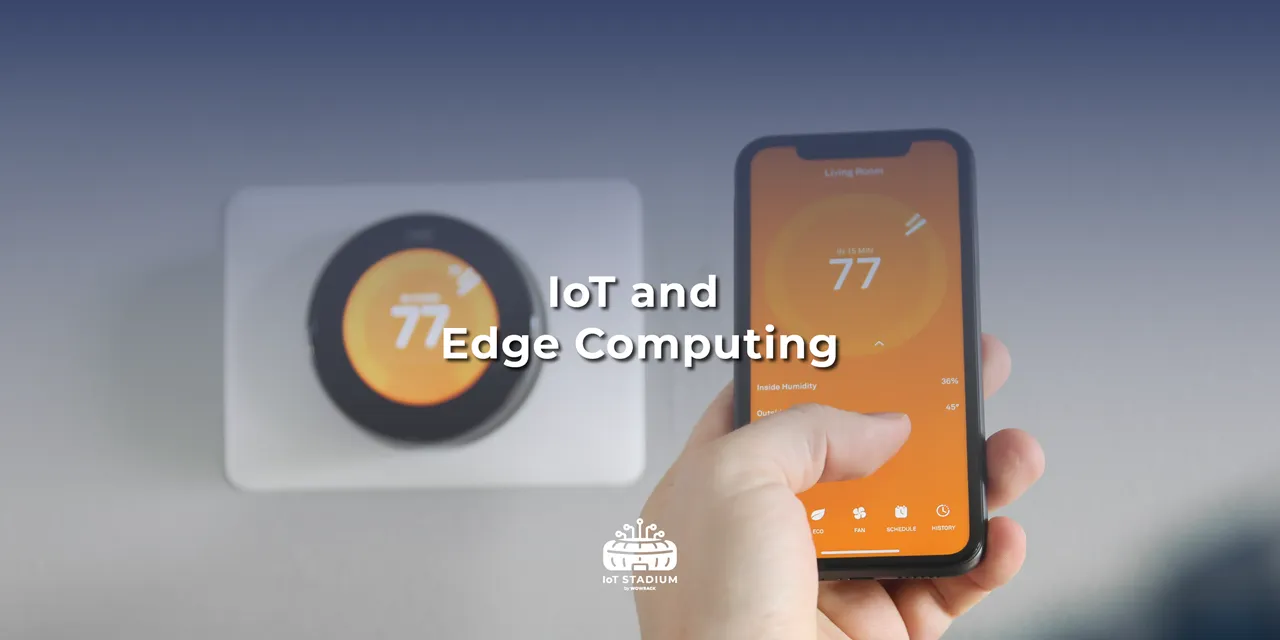Have you ever wondered why Internet of Things (IoT) devices can last several months when placed indoors but quickly run out of power when placed outdoors? It’s frustrating when you rely on a sensor to collect critical data, only to find the battery drained — especially in remote or outdoor sites where maintenance is difficult.
in a hot, enclosed room might outlast one exposed to direct sunlight or fluctuating temperatures.
Environmental factors such as temperature, signal strength, and humidity can quietly drain more power than most users expect, turning what seems like a small difference into a major impact on battery life.
In this article, we will discuss several known factors that can affect battery life, how to address these factors, and the challenges involved. If you would like to read more about these factors, solutions, and challenges, please click on the reference links we have provided.
Factors Which Affect the Battery
As mentioned, environmental factors such as temperature, signal strength, and humidity can affect battery life, but there are also several other factors — in fact, recent studies have shown that battery lifespan of IoT devices deployed in harsher or fluctuating ambient conditions can be significantly shorter .
Beyond the environment itself, operational choices — from transmission intervals to firmware design — play an equally critical role. Understanding how both external and internal factors influence energy consumption helps explain why some devices last for years, while others deplete within months.
Environmental Factors
-
- Temperature
Temperature is one of the most influential factors in battery performance. Higher ambient temperatures speed up internal chemical reactions, causing batteries to degrade faster over time — a well-known effect in
While few studies specifically measure how outdoor exposure affects battery aging, it is safe to say that sunlight and unshielded environments can amplify temperature fluctuations — indirectly stressing the battery, especially in devices without thermal protection.
Communication and network-related factors can indirectly impact battery life. Studies on IoT and wireless sensor networks show that most energy is consumed during data processing and transmission. Problems like long transmission distances, repeated retransmissions, collisions, and idle listening can dramatically increase power usage. In practical terms for IoT devices, when a network link is poor or the device must transmit over extended range or through multiple hops, the power draw for communications rises — which in turn shortens battery life.
Operational Factors
-
- Transmission Interval and Duty Cycle
How frequently a device sends data has a direct impact on energy consumption. A shorter transmission interval — for example, sending telemetry every few seconds instead of every minute — can multiply power usage several times over. This relationship creates a trade-off between data responsiveness and longevity. In many practical cases, simply optimizing the duty cycle or using event-based reporting can extend battery life dramatically without sacrificing functionality.
-
- Sensor Activity and Peripheral Usage
Each device component — sensors, LEDs, buzzers, or GPS modules — contributes to total power draw. Some sensors require constant excitation or analog sampling, which can consume more energy if not carefully managed.
In our internal testing, we found that even identical devices — same battery, sensor, and communication protocol — showed very different battery lifespan.
Device A's battery drained faster than Device B's. It operated inside a generator, exposed to hot and humid conditions, and had to transmit fartherto reach the indoor BLE gateway. Meanwhile, Device B — placed in a cooler room
From these observations, it becomes clear that there is no single cause for short battery life — it is an interplay between environmental exposure, operational parameters, and hardware configuration. Understanding these factors provides the foundation for improving battery performance.
That brings us to the next step: how can we actually optimize device longevity under different environmental conditions?
How to Optimize Battery Life in Different Environments
Now that we have explored the key factors that affect battery life — from ambient conditions to device behaviour — the next question is: How can we optimize for these conditions, both indoors and outdoors? Below are practical strategies based on research and industry practice.
Thermal and Enclosure Management
Effective battery life in varying environments often depends on how well the device protects the battery and manages heat. While the papers might not always provide full data for “direct sunlight or unshielded outdoor exposure”, the Keysight blog emphasises that both high and low temperatures negatively impact battery internal resistance and performance.
For indoor deployments, where temperature is more stable, optimizing airflow, avoiding heat build-up, and preventing high-temperature exposure still matter. For outdoor use, design the enclosure with proper insulation or ventilation, and avoid prolonged direct sunlight whenever possible.
Optimize Communication & Duty Cycle
By adjusting traffic profiles, coverage scenario and network configuration, battery life can extend significantly in practical terms: for outdoor devices which often face weaker signal or more retransmissions, optimize the transmission interval (e.g., increase interval, batch data) and use event-based rather than constant updates.
Also consider using lower-power protocols or adaptive transmission power to match the environment (indoors vs outdoors).
Power Management
Keysight’s research suggests understanding the battery's energy storage and discharge behavior over time. Additionally, they advise mapping the battery's internal resistance (IR) and open circuit voltage (OCV) during discharge. Battery life can be impacted by variables including temperatures, load current profiles (constant and dynamic), and various operating modes, such as constant current, power, and internal resistance.
For this reason, it's critical to design distinct battery profiles to correspond with particular discharge circumstances.
Overall, the best solution is by setting up your own device, according to its function, deployment location, and number of additional components.
Challenge
Despite the strategies available to optimize IoT device battery life, several persistent challenges remain — especially when devices are deployed in real-world, uncontrolled environments.
Unpredictable Real-World Conditions
Even with lab testing and simulations, real-world conditions— unpredictable weather, fluctuating signals, electromagnetic interference, or damaged enclosures— can cause battery performance to deviate significantly from expected result.
Trade-off Between Performance and Longevity
Adding data frequency, active sensors, or transmit power does improve accuracy and reliability—but it also shortens battery life. Many engineers end up “trading off” battery life for functionality.
Cost and Maintenance Constraints
Ideal optimization (such as special enclosures, thermal shielding, or dynamic duty control) comes at a cost. For large deployments, it is often not economical. This is especially true if nodes are placed in hard-to-reach areas.
Again, while experts can provide models and best practices, however, conditions in the real world can force engineers to rack their minds to achieve the optimal outcomes.
Conclusion
The battery in an IoT device is a combination of factors such as environmental conditions, communication specifications, and device functionality, all of which contribute to how long a device can reliably perform, whether indoors or outdoors.
While research and design optimization can extend battery lifespan, field deployments reveal the limits of control. Outdoor environments introduce unpredictable variables — heat, humidity, fluctuating signal quality — that make even well-engineered devices behave differently than expected. Each deployment, therefore, requires its own calibration between performance, maintenance, and efficiency.
Ultimately, optimizing battery life is less about finding a one-size-fits-all solution and more about understanding context: how the device is used, where it’s placed, and what trade-offs are acceptable. A thoughtful balance between environmental adaptation, power strategy, and operational goals leads not only to longer battery life — but also to more dependable, sustainable IoT systems.
Understanding these dynamics helps developers design smarter, longer-lasting, and more reliable IoT systems — built to perform wherever they’re deployed.




